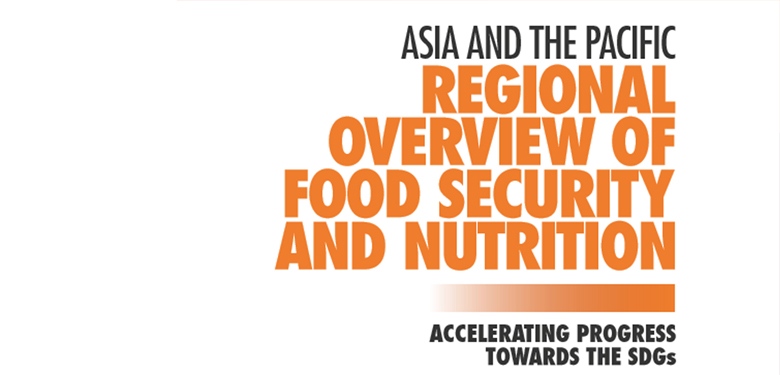UN Warns Asia about Weakened Fight Against Hunger in Asia
The Asia Pacific region is at serious risk of missing the 2030 SDG targets to end all forms of malnutrition from hunger and obesity. The region is home to more than half of the world’s malnourished children but four UN agencies are warning that the region could face a colossal human loss if countries in the region do not recommit themselves to ending all forms of malnutrition and achieving zero hunger.
The report, Asia and the Pacific Regional Overview of Food Security and Nutrition, published by the Food and Agriculture Organization of the United Nations (FAO), the United Nations Children’s Fund (UNICEF), World Food Programme (WFP) and the World Health Organization (WHO), highlights a number of converging challenges that threaten to undermine the Sustainable Development Goal to end all forms of malnutrition by 2030 (SDG 2). The report argues that the reduction in the number of hungry and malnourished people – including children – has come to a virtual standstill in many parts of Asia and the Pacific.
The Asia and Pacific region accounts for 486 million people who are undernourished. While recently released global figures indicate an overall rise in the prevalence of hunger worldwide, returning to levels from a decade ago, this regional report points out that stagnation in combating hunger and malnutrition in Asia and the Pacific is a major concern due to the large numbers of people involved.
The report argues that progress in reducing undernourishment has slowed tremendously and estimates show that the number of hungry people has barely changed during the past two years, making it increasingly difficult to achieve the zero hunger target.
Malnutrition covers a broad spectrum and affects people of all ages – ranging from severe undernutrition to obesity – but children in particular, continue to bear the burden. In the region, 79 million children, or one child in every four below the age of five, suffers from stunting and 34 million children are wasting. As many as 12 million people suffer from severe acute malnutrition with drastically increased risk of death. While some significant progress has been made towards a reduction of stunting, there has been little improvement in wasting during the past decade.
The report argues that a large number of children in the region continue to face the multiple burden of malnutrition despite decades of economic growth. This is a colossal human loss given the association between undernutrition and poor cognitive development, with severe lifelong consequences for the future of these children. This, in turn, results in economic losses to a nation’s economy due to missed opportunities of human potential.
Incidences of climate-related food security disasters have been rising in the region. Natural disasters impact food security and nutrition through reduced food production, which can then cascade down to the entire food value chain, affecting livelihoods and causing economic and agricultural loss. Beyond the short term, disasters can impact the agriculture sector through loss of assets and rural infrastructure, and through increased disease outbreaks.
Limited or poor access to safe food and water, sanitation and hygiene (WASH) is another of the key drivers of malnutrition among children. To contribute substantially to reducing malnutrition, food safety and WASH improvements and coverage must be improved and expanded across the region.
The report also highlights the almost paradoxical reality of an increase in obesity of both children and adults in the region. It reveals that the region is now home to the fastest growing prevalence of childhood obesity in the world. The region has witnessed a rapid growth in the number of overweight children and the serious consequences that entails for their future health and well-being. An estimated 14.5 million children under five are overweight and virtually all children in the region are increasingly exposed to cheap, unhealthy processed foods high in salt, sugar and fat but poor in essential nutrients.
As migration from rural to urban areas continues apace, particularly involving poorer families, urban malnutrition is another challenge facing many countries. At the current rate of urbanization, by 2030, more than 55 percent of the Asian population will be living in cities and towns. While urbanization can bring economic opportunity, the growth is often not equitable and is associated with a concurrent prevalence of high and sustained undernutrition in children with rapidly rising rates of obesity.
The four UN agencies summarize the report’s findings: What is becoming increasingly clear is that the world cannot meet the 2030 target of zero hunger if Asia and the Pacific – the world’s most populous region – is not leading the way. It is a hard reality but one that must be faced with a united determination to turn things around.
The full report can be seen here.
